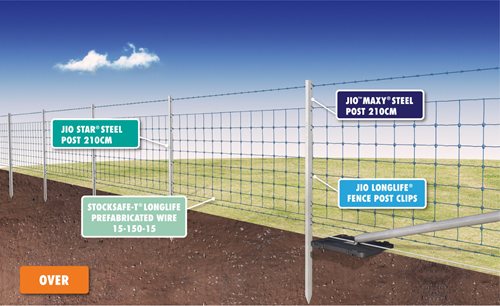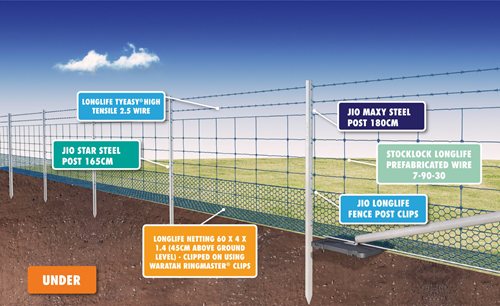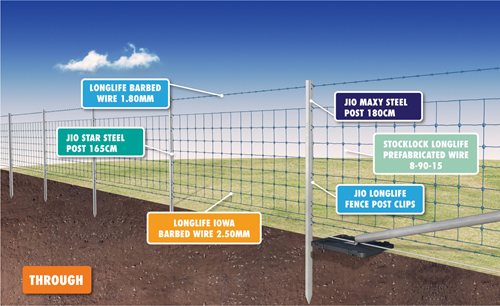O.U.T ™ - Over Under Through
When designing your fence, consider what animals you are trying to keep in or out. Whether feral animals are the issue, such as wild pigs or dogs, kangaroos or pademelons, or containing stock to certain areas of a property, the fence is going to be tested by these animals in one of three ways: by either trying to get Over it, Under it or right Through it.
Waratah has provided a selection of fence designs that can assist with deciding what could be the most effective fence design to suit your application.
- Consider the reason you are fencing (crop protection, stock containment, boundary fencing etc).
- Start by listing the animals you are trying to keep in or out.
- Confirm whether these animals will try to go Over, Under or Through fence lines?
- Mark each animal with an ‘O’ , ‘U’ , or ‘T’ .
- Browse the fence designs that address the O.U.T principles below.
- Do you need a fence design that addresses just one principle (i.e. Over) or a combination (i.e. Over, Under)?

Fence height will help provide better protection from animals that jump, such as kangaroos. This fence design uses 210cm posts and 150cm high Stocksafe-T ® wire. If you need a higher fence, consider using 240cm posts and maybe a line or two of 1.8mm high tensile barb wire on top.

Traditional fence designs usually have a gap between the bottom wire and the ground, which can allow easy access for smaller or burrowing animals, such as wild dogs or wombats. This fence design uses a combination of 180 and 165cm posts as well as the popular 90cm high Stocklock ® or Stocktite ® wire. Waratah Netting has been attached to the bottom of the fence and either laid on, or dug into the ground – commonly called a lap fence.

Pre-fabricated fencing with tighter picket spacings can deter those animals that try to ‘push through’ a fence, such as pigs. This fence design uses 180 and 165cm posts as well as a 90cm high Stocklock or Stocktite wire with tight 15cm picket spacings. A 1.8mm barb wire on the top for impact strength and 2.5mm Iowa barb on the bottom to deter pushing under the fence and to resist fire damage finishes this common fence design.